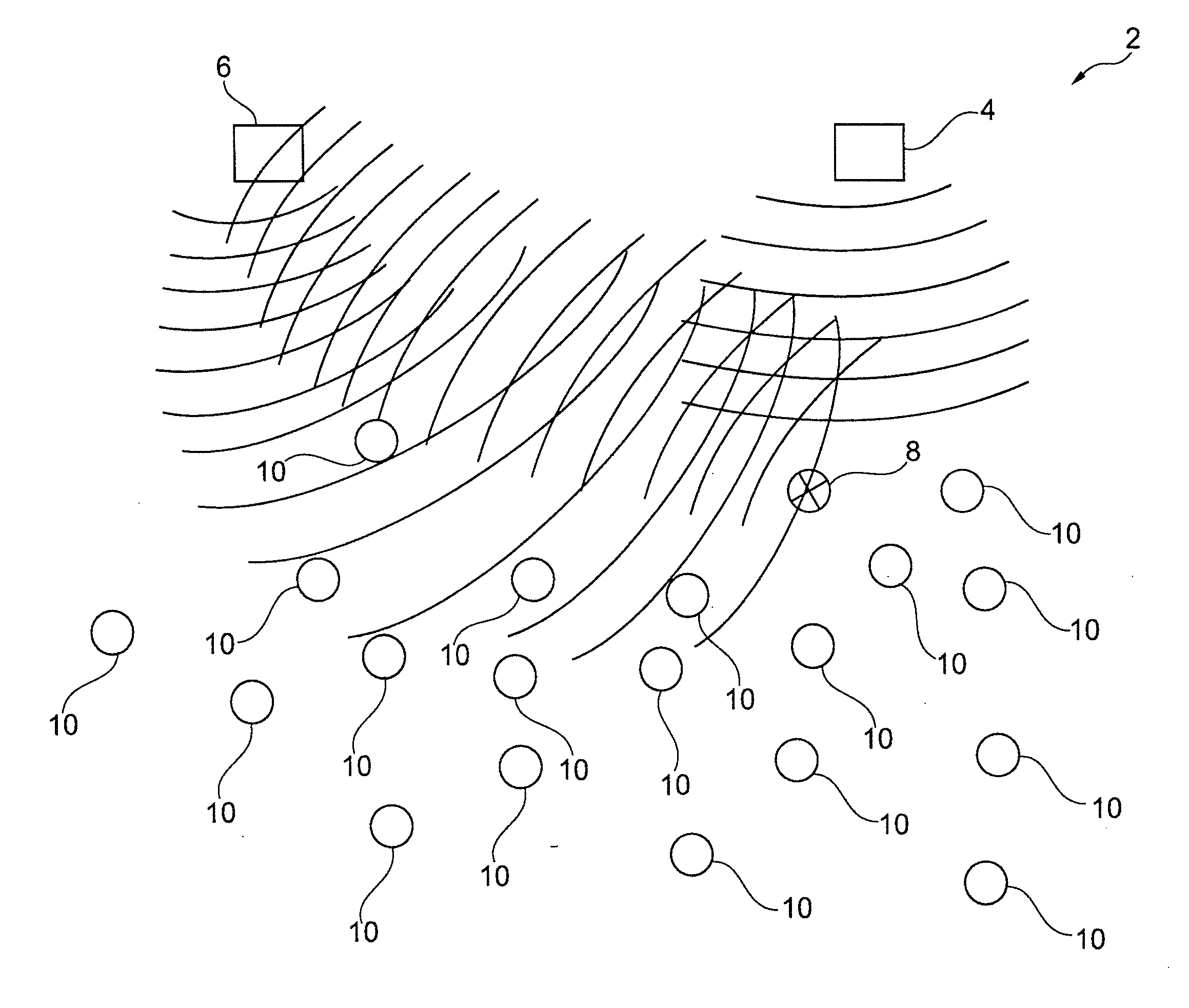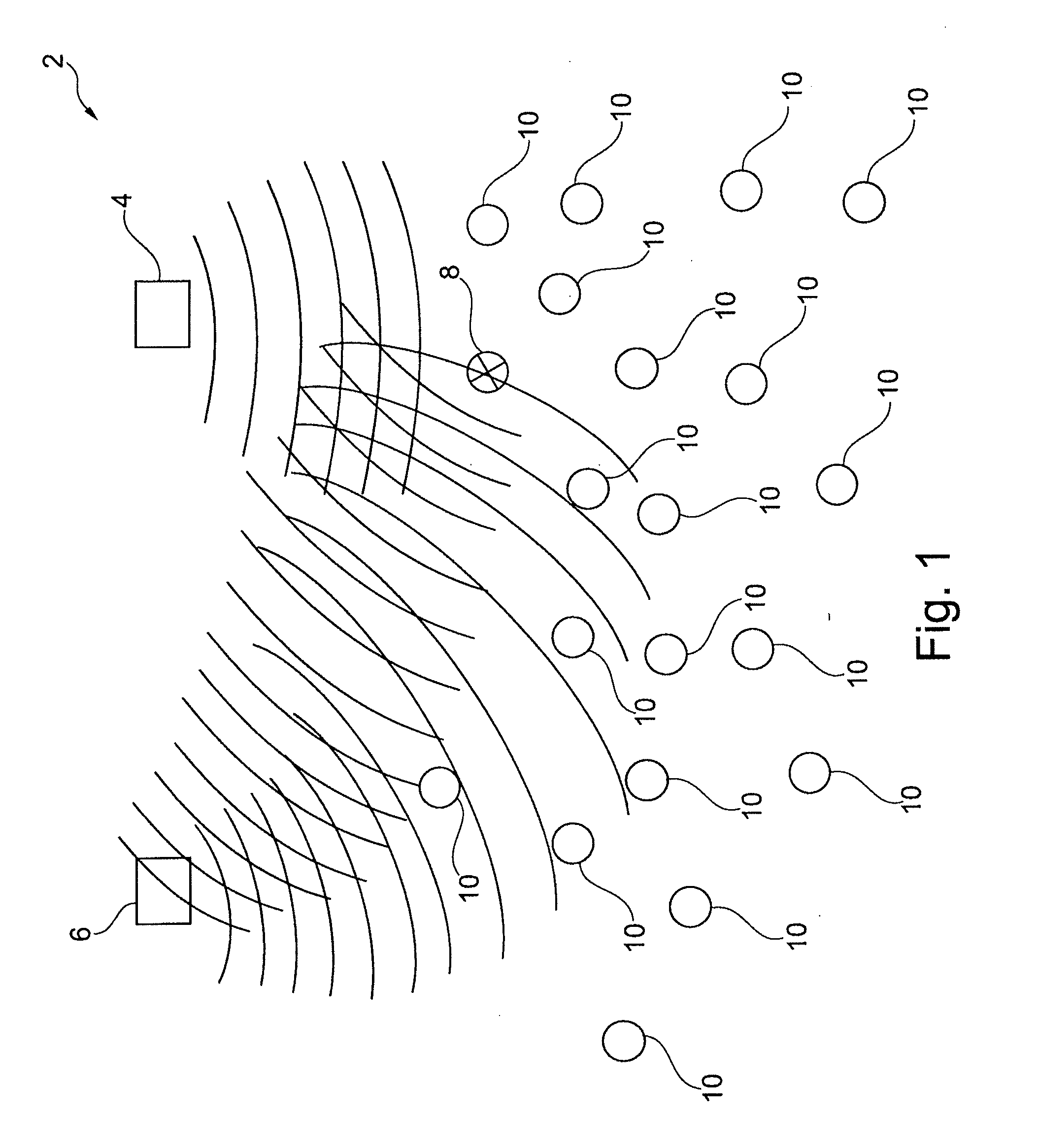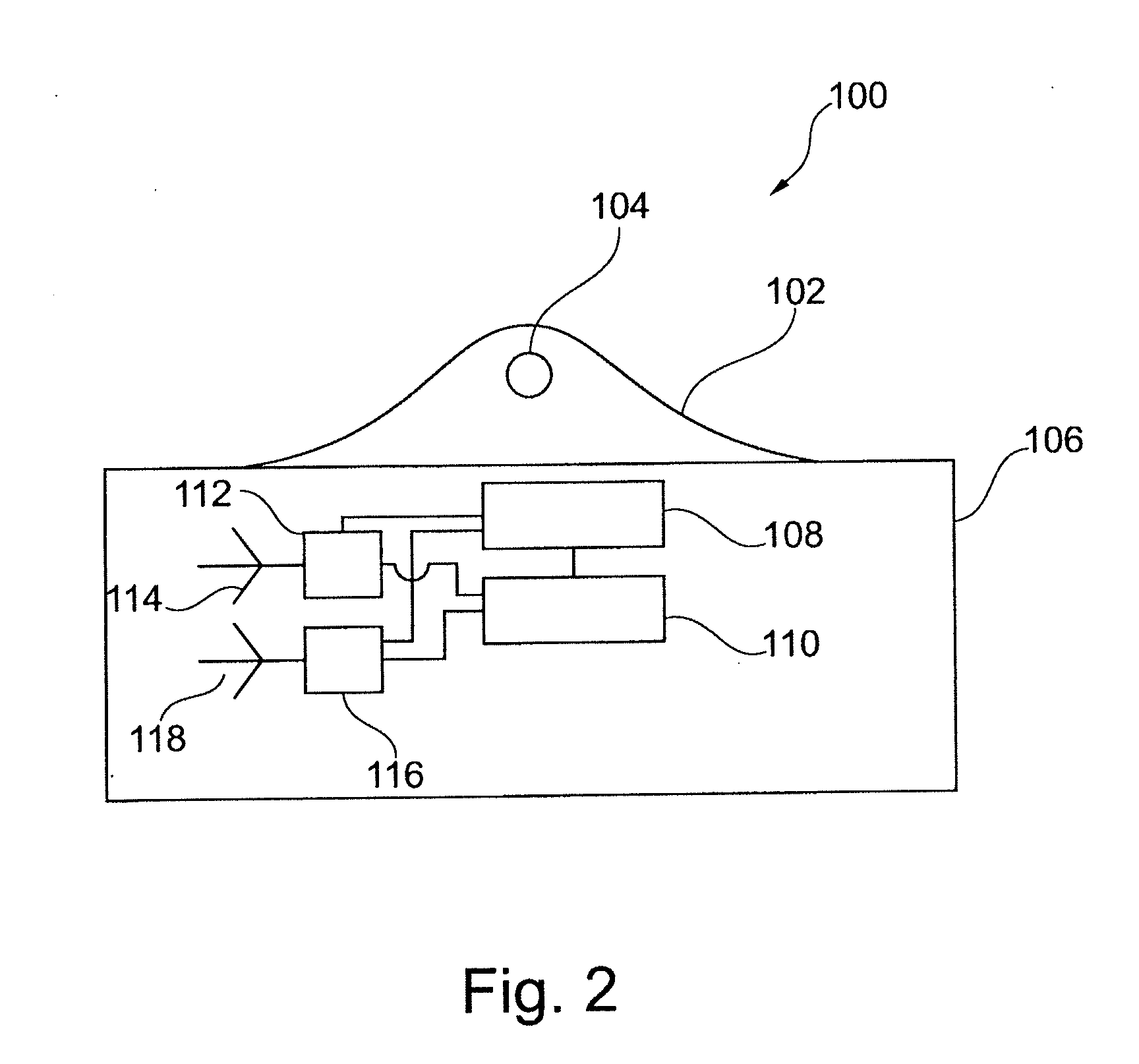Detection of moving objects
a technology for moving objects and position determination, applied in the direction of subscriber station connection selection arrangements, indirect connection, reradiation, etc., can solve the problems of application not disclosing, application not disclosing, etc., and achieve the effect of reducing the size of data and transmitting very large data packages
- Summary
- Abstract
- Description
- Claims
- Application Information
AI Technical Summary
Benefits of technology
Problems solved by technology
Method used
Image
Examples
Embodiment Construction
[0019]This may be achieved by a system as specified in the preamble of claim 1 if communication between the fixed transceiver facilities and the electronic transceiver units occurs in an ultra wideband frequency spectrum in a frequency range from 3.10 GHz to 10.6 GHz, wherein communication occurs in the form of transient pulses emitted from the electronic transceiver units, and where position determination is performed by calculating time or phase difference between receptions of a signal at least two transceiver facilities, respectively.
[0020]By using high frequency wideband communication, it becomes possible to determine the position of the movable objects with very high accuracy. In principle, positioning may be performed down to fractions of a wavelength for the given frequency by an efficient phase differential measurement, but in practice, where reflection of signal may occur, there may be expected an accuracy possibly corresponding to one or more wavelengths. By this inventio...
PUM
 Login to View More
Login to View More Abstract
Description
Claims
Application Information
 Login to View More
Login to View More - R&D
- Intellectual Property
- Life Sciences
- Materials
- Tech Scout
- Unparalleled Data Quality
- Higher Quality Content
- 60% Fewer Hallucinations
Browse by: Latest US Patents, China's latest patents, Technical Efficacy Thesaurus, Application Domain, Technology Topic, Popular Technical Reports.
© 2025 PatSnap. All rights reserved.Legal|Privacy policy|Modern Slavery Act Transparency Statement|Sitemap|About US| Contact US: help@patsnap.com



